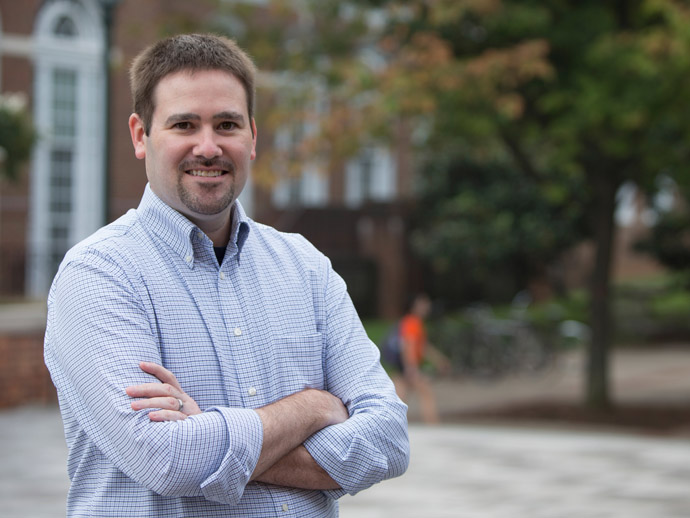Featuring Michael Kennedy, University of Virginia
By Liz Berke, NCSER intern
What do these three individuals have in common: a former special education teacher in Delaware, a former reading specialist in California, and a former special education teacher in Georgia? They are the three Principal Investigators of the three inaugural projects funded by NCSER through its Research Training Program in Special Education: Early Career Development and Mentoring grant program. Through this program, scholars embarking on their research careers in special education and early intervention have the opportunity to work with established mentors as they develop their research skills. Over the next few months, we will be featuring the current research of our investigators that IES has supported through this and other research programs for early career investigators. We are looking forward to sharing their perspectives with our readers.
First up in our series is Dr. Michael Kennedy from the University of Virginia. A former special education teacher in Delaware, Dr. Kennedy is being mentored by Dr. Mary Brownell (University of Florida) and John Lloyd (University of Virginia). The main aim of his IES funded project is to create valid measures of teacher practices and to work with practitioners to develop effective professional development materials and processes. The materials are intended to help middle school science and special education teachers improve their delivery of evidence-based vocabulary instruction for students with disabilities. Dr. Kennedy was recently awarded the Early Career Researcher award from the Instructional Technology Special Interest Group of the American Educational Research Association and University of Virginia’s Alumni Board of Trustees All University Teaching Award.

We had the opportunity to speak with Dr. Kennedy about the challenges and benefits of starting a career in special education research and how IES is helping him reach his professional goals.
What are some of the biggest challenges that you face as an early career researcher? How do you hope this award will help you overcome those challenges?
I would say the biggest challenge as a young researcher is that my eyes are regularly bigger than my stomach in terms of wanting to take on huge research questions that would require a large interdisciplinary team and access to a plethora of resources. Being patient and addressing questions that are still important, but actually doable as an Assistant Professor working on a shoestring budget definitely takes discipline. The Early Career Award from NCSER has helped me assemble a team of Hall of Fame caliber colleagues that is really superb in helping me stay focused on one key component of the larger study at a time, while simultaneously helping me recognize how the initial studies are working toward something greater. Working on one big project of my own design for four years is something I’ve never done before; I’ve learned it’s very easy to lose sight of the forest because of the pesky trees, so I really rely on my mentors for perspective and guidance.
What advice would you give to early career researchers?
I think my best advice is to really lock down your niche within your field and go to work on creating new knowledge that people can really connect with in practical ways. As an example, think about your sub-field’s most successful and well-known researcher and what they are known for (I’ll wait). Isn’t it remarkable how easy it is to pair that person with the widget, curriculum, or broad body of research they are associated with? It’s hard to imagine, but they were once Assistant Professors like us trying to get a program of research off the ground. How did they do it? Other than being really smart, their currency was, and remains new thinking and ideas that can be translated into materials that help students improve as evaluated by relevant dependent measures. If you don’t have ideas that other people care about and can make a difference for people, you aren’t going to get very far in our line of work. So that brings me back to my first comment – you have to become expert in your corner of the world, and then let your creativity take over.
What is your favorite aspect of working with your mentors?
I would say my favorite part of working with my mentors is the access to top notch feedback that simply does not exist post grad school for most people. As doc students we are constantly receiving feedback from our advisors and other professors, but all of that pretty much goes away as we take our first jobs. Sure we get feedback from journal editors & reviewers, but that is not regular enough to always make a big difference. Being able to walk down the hall (or get on the phone in the case of my co-mentor) to have a conversation about a new idea or data specific to a project they are invested in is really a remarkable gift. Another really important aspect of my relationship with my mentors is how differently they think about things than I do. They ask questions I never considered and poke holes in my logic that can be frustrating, but I recognize how important it is to consider these perspectives and make sure I address it. My advice for all considering applying for this project is to think very carefully about who you select as your mentor or co-mentors – think big and don’t settle!
Questions? Comments? Please send them to: IESResearch@ed.gov.